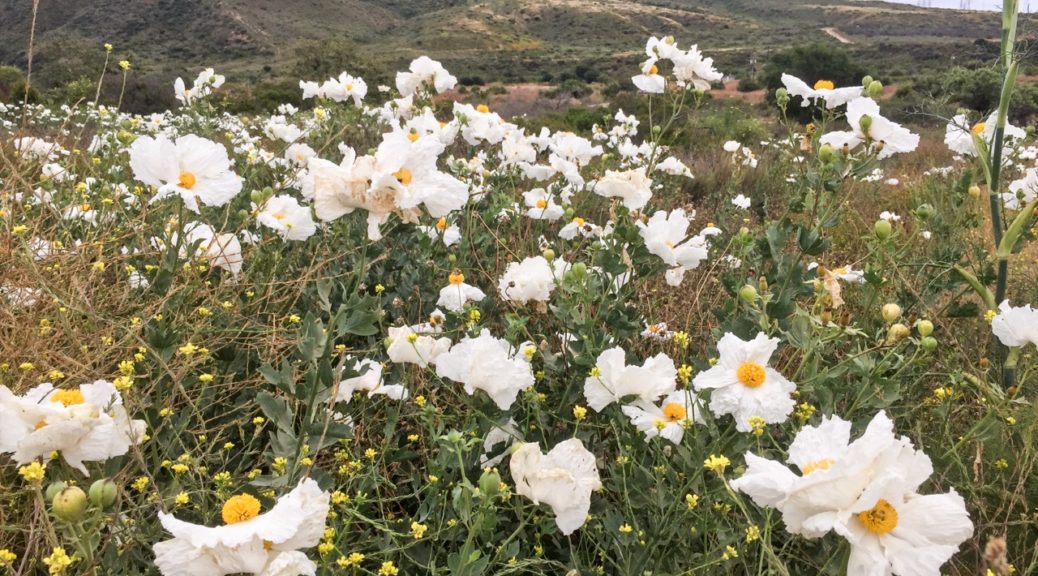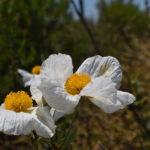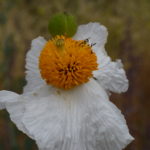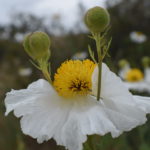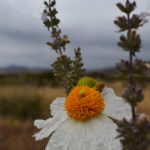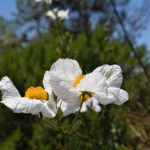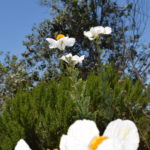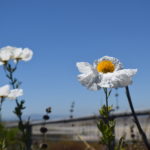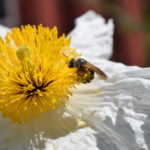During one of my visits to the Vernal Pool Restoration Project on Proctor Valley Road, as I was driving I noticed in the distance a garland of flowers protruding over one of the many Laurel Sumacs near the dry wash. There stood a large perennial that served up a generous portion of large, crepe paper-like white flowers with showy yellow stamens, which looks like a fried egg-plant.
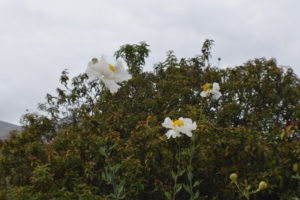
The flower is lightly scented with 8-9 inch wide blooms festooning the upper reaches of stout with glabrous stems cloaked in irregularly lobed gray-green leaves, this shrub is tough-as-nails and spreads by vigorous rhizomes, Romneya coulteri likes sun and good drainage; in heavy soils it can be difficult to establish. Matilija Poppy can be found in dry washes and canyons away from the immediate coast and in communities located in chaparral, coastal sage scrub between 1000 and 4,000 feet.
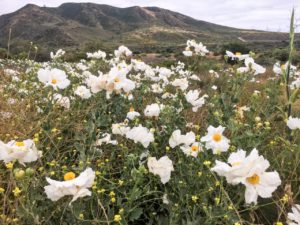
In 1890 this California wildflower was often called the “fried-egg poppy,” and was a nominee for the honor of the California state flower, but came in second to the California poppy, Eschscholzia californica.
Matilija poppy is said to be named after Chief Matilija of the Chumash Indian Tribe.
In the stalk of the flower, there is a clear to yellowish liquid substance that the Cahuilla Indians used to drink.
The Native Chumash Indians valued the plant for its medicinal value as well. The plant was used medicinally for skin and gum problems and stomach upset. The folklore of the the Chumash people believed the petals of the flower were made from the soul of a maiden, who died of a broken heart. Their Chumash gods transformed her into the pure white petal.

